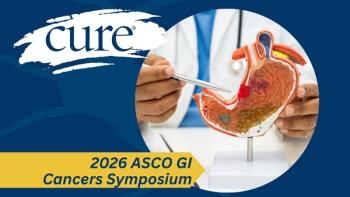
Social Factors Affect Survival in Young Patients With Leukemia
Researchers at UAB found that patients aged younger than 65 who were unmarried, lived in lower-income areas, and who were uninsured or Medicaid beneficiaries were at significantly higher risk of premature mortality.
Along with biological factors such as age and disease characteristics, a new study has found that social factors including marital status, county-level income and insurance status may also affect the chances of survival among young patients with acute myelogenous leukemia (AML).
Researchers at the University of Alabama at Birmingham (UAB) found that patients aged younger than 65 who were unmarried, lived in lower-income areas, and who were uninsured or Medicaid beneficiaries were at significantly higher risk of premature mortality.
“We believe these three factors indicate lack of material and social support preventing young patients from successfully walking the long and difficult road towards a cure,” lead author Uma Borate, assistant professor in the UAB Division of Hematology and Oncology, said in a statement.
In the study, which was published online in Cancer, the investigators analyzed a database of 5,541 patients between the ages 19 and 64 who were diagnosed with AML between 2007 and 2011 and reported to the Surveillance, Epidemiology, and End Results program registry (SEER 18).
Nonbiological factors, including marital status, insurance status, county-level income, and education were assessed along with biological factors including disease subtype, gender, age, race and ethnicity.
The median survival for the study population was 16 months, and on multivariate analysis, increased risk of death was associated with being a Medicaid beneficiary, uninsured, single, divorced or living in a low-income county. Nonbiological factors also affected the risk of early (less than two months) and late mortality among patients who received chemotherapy.
AML will affect approximately 20,830 in 2015, and an estimated 10,460 Americans will die of the disease. While much is known about biological factors and their prognostic implications, this is the largest study to date that examines the effect of socioeconomic factors on outcomes of younger patients with AML.
“As physicians, we often emphasize more of the biology of the cancer, especially with the recent focus on personalized medicine,” author Luciano Jose Costa, associate professor in the UAB Division of Hematology and Oncology, said in a statement. “But we need to pay the same attention to resources available to our patients, as this greatly impacts their chances to survive leukemia.”
The authors concluded that marital status, insurance status, and income should be integrated into outcome comparisons for younger patients with AML. Interventions are also needed to mitigate the impact of these factors on survival, the researchers noted.
“Taking from the results of this study, factors that have nothing to do with quality of care need to be accounted for when comparing predicted with actual outcomes — otherwise we will create a disincentive for hospitals and doctors to care for less privileged patients,” Borate said.
Borate UM, Mineishi S, Costa LJ. Nonbiological factors affecting survival in younger patients with acute myeloid leukemia [published online September14, 2015]. Cancer.




